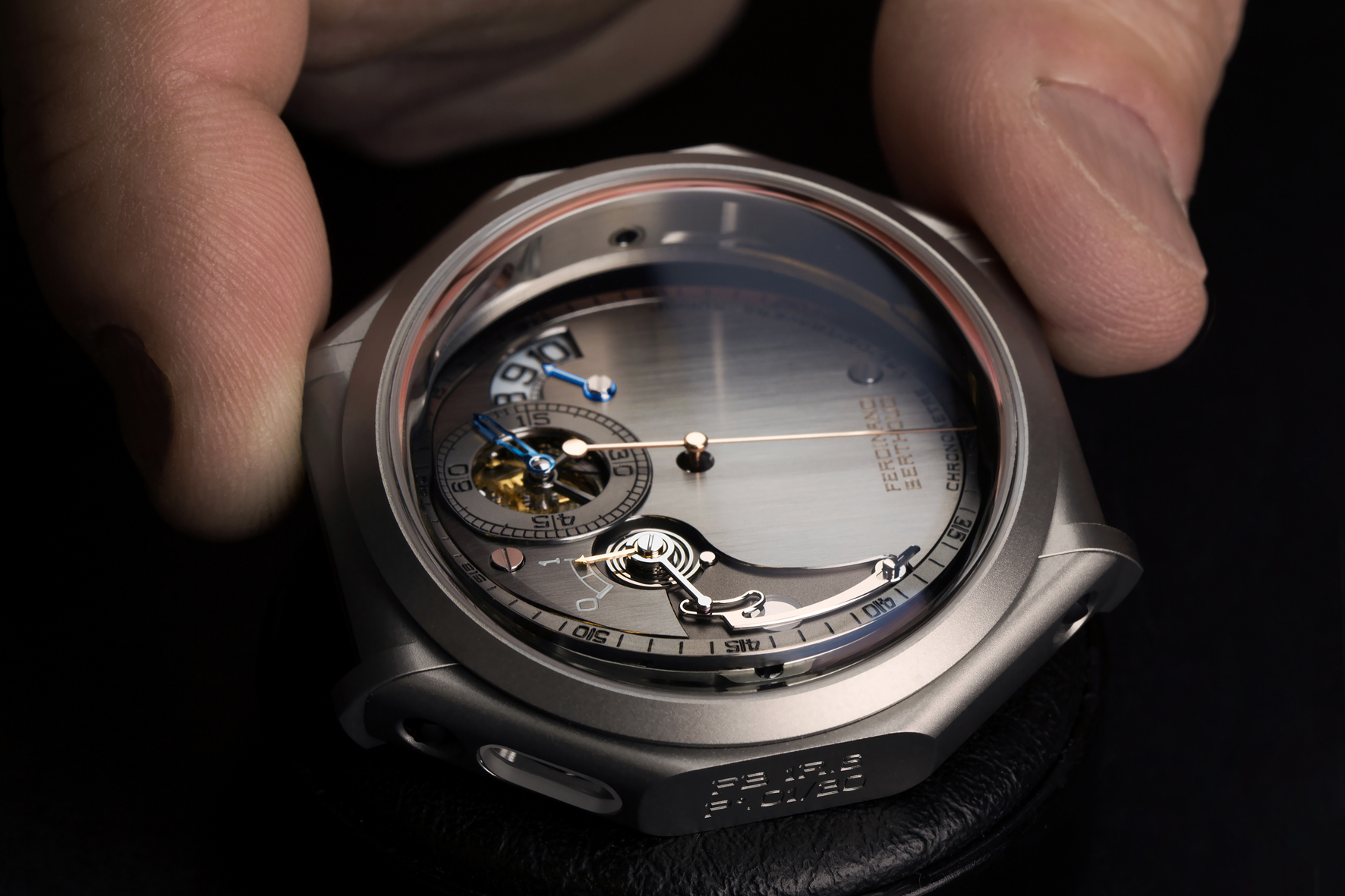Ferdinand Berthoud: Chronomètre FB 1R.6-1
2 July 2018The Chronomètre Ferdinand Berthoud FB 1R.6-1 is inspired directly from Ferdinand Berthoud’s research on his Marine Chronometer no. 7. The latter housed a number of solutions that improved the operating principles of its longitude watches. Among them was its display that differed from the usual rules governing regulators – which assign a different place on the dial to the hours, minutes and seconds displays – by the use of a large central seconds hand. The Chronomètre Ferdinand Berthoud FB 1R.6-1 adds some unusual details and a unique presentation to the aesthetic and technical characteristics of the previous versions.
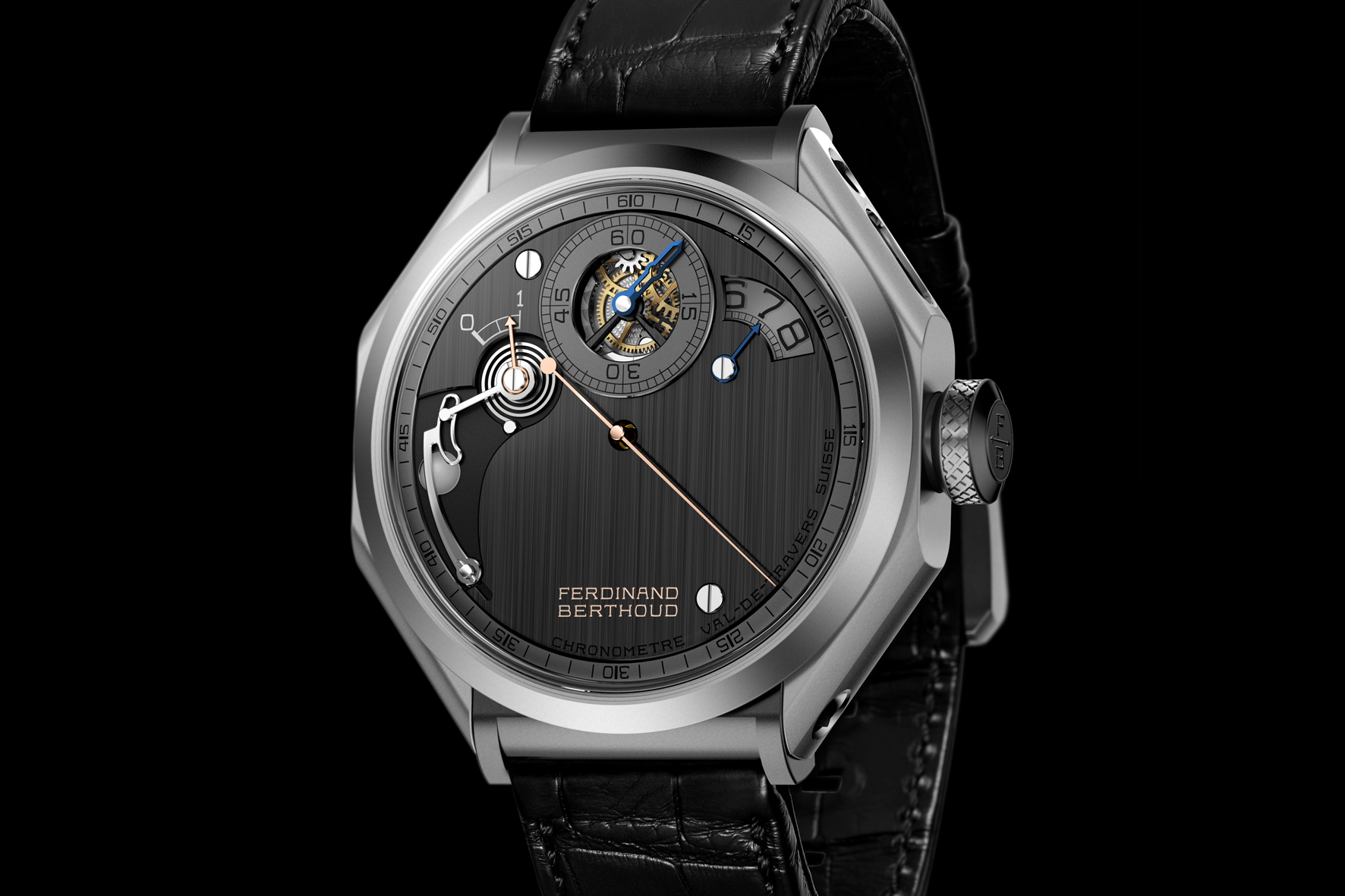
The 44mm case features two octagonal-shaped stainless steel side pieces, giving it a characteristic shape including two lateral portholes at 2 and 11 o’clock – providing a chance to admire the chain-and-fusee mechanism in action. These two openings are complemented by a screw-down stainless steel case-back fitted with glare-proofed sapphire crystal enabling observers to appreciate the high-quality finishing lavished on the FB-T.FC-R movement. The knurled 9mm-diameter stainless steel crown bearing a black ceramic medallion ensures smooth winding of the movement endowed with a 53-hour power reserve.
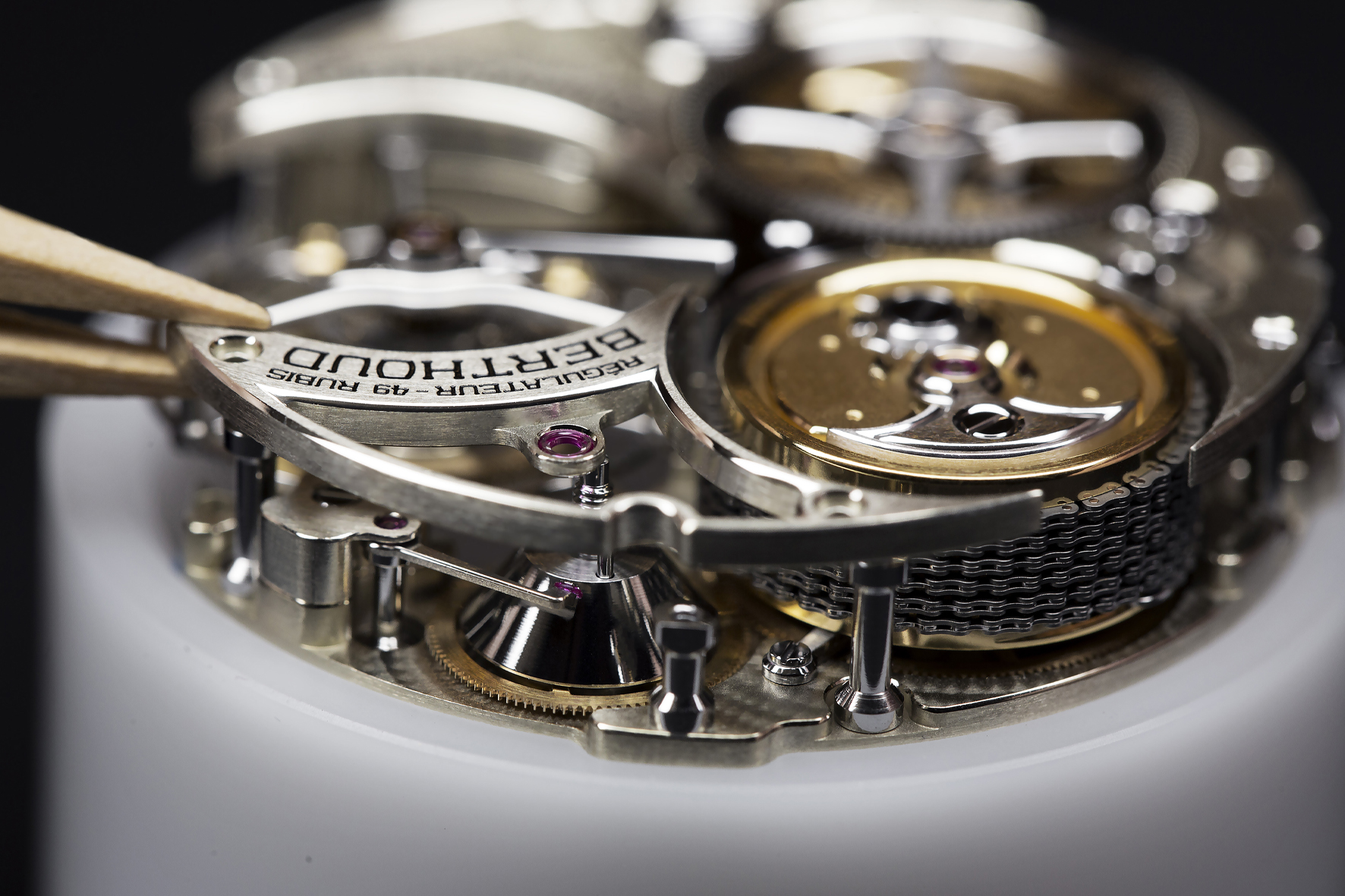
The novel construction of the Chronomètre Ferdinand Berthoud IR.6-1 sets it a part from all existing regulator-type displays. Instead of featuring a high-up opening providing a view of the tourbillon and the fourth wheel (driving the seconds) has a mostly solid dial. It is made of nickel silver, vertically satin-brushed by hand and black rhodium-plated. Of the three small apertures, the first serves to show the hours, offset at 2 o’clock and appearing on a glare-proofed sapphire crystal disc bearing transferred Arabic numerals striking a pleasing contrast with a white background. The second opening features an original power-reserve display mechanism, distinguished by a large dial cut-out revealing part of the finely sandblasted and black rhodium-plated mainplate. Located in the centre of the finely chamfered, bead-blasted and black rhodium-plated minutes counter, the third aperture displays a hand-engraved “pyramid” motif inspired by an openworked Ferdinand Berthoud astronomical clock belonging to the L.U.CEUM collection. Meanwhile, the seconds appear around the rim of the dial on a flat inner bezel ring made of black rhodium-plated, bead-blasted and chamfered nickel silver.
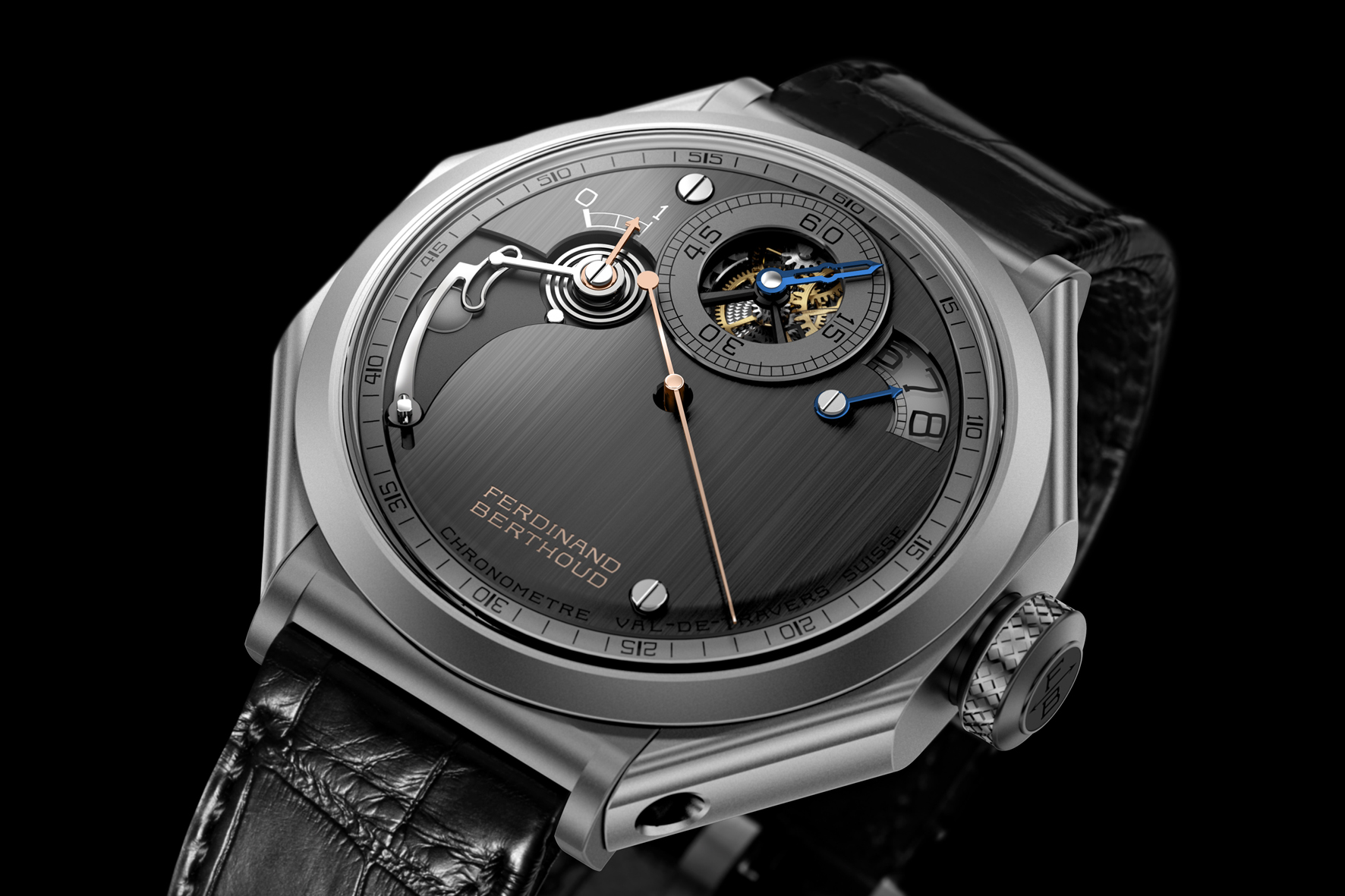
Finally, the nature and provenance of the Chronomètre Ferdinand Berthoud FB 1R.6-1 can be read off on this large dial, engraved with the inscription “Chronomètre Val-de-Travers Suisse”.
The FB-T.FC.R calibre is built according to a unique architectural concept. This hand-wound movement features 18 nickel silver bridges framed by polished titanium pillars surrounding the mechanical organs. This construction is typical of 18th century marine chronometers. The architectural approach is picked up in the design of all the components, and especially in the symmetrical equilibrium of the movement.
The distinctive nature of the FB-T.FC.R calibre lies in its inverted upside-down barrel and fusee, and particularly in the fact that both elements are suspended, meaning held on only one side. A patent has been filed for this construction which saves precious millimetres. At 9.89 mm thick, the movement of the Chronomètre Ferdinand Berthoud FB 1R.6-1 thus remains extremely thin for its category despite the regulator-type display and the new power-reserve indication.
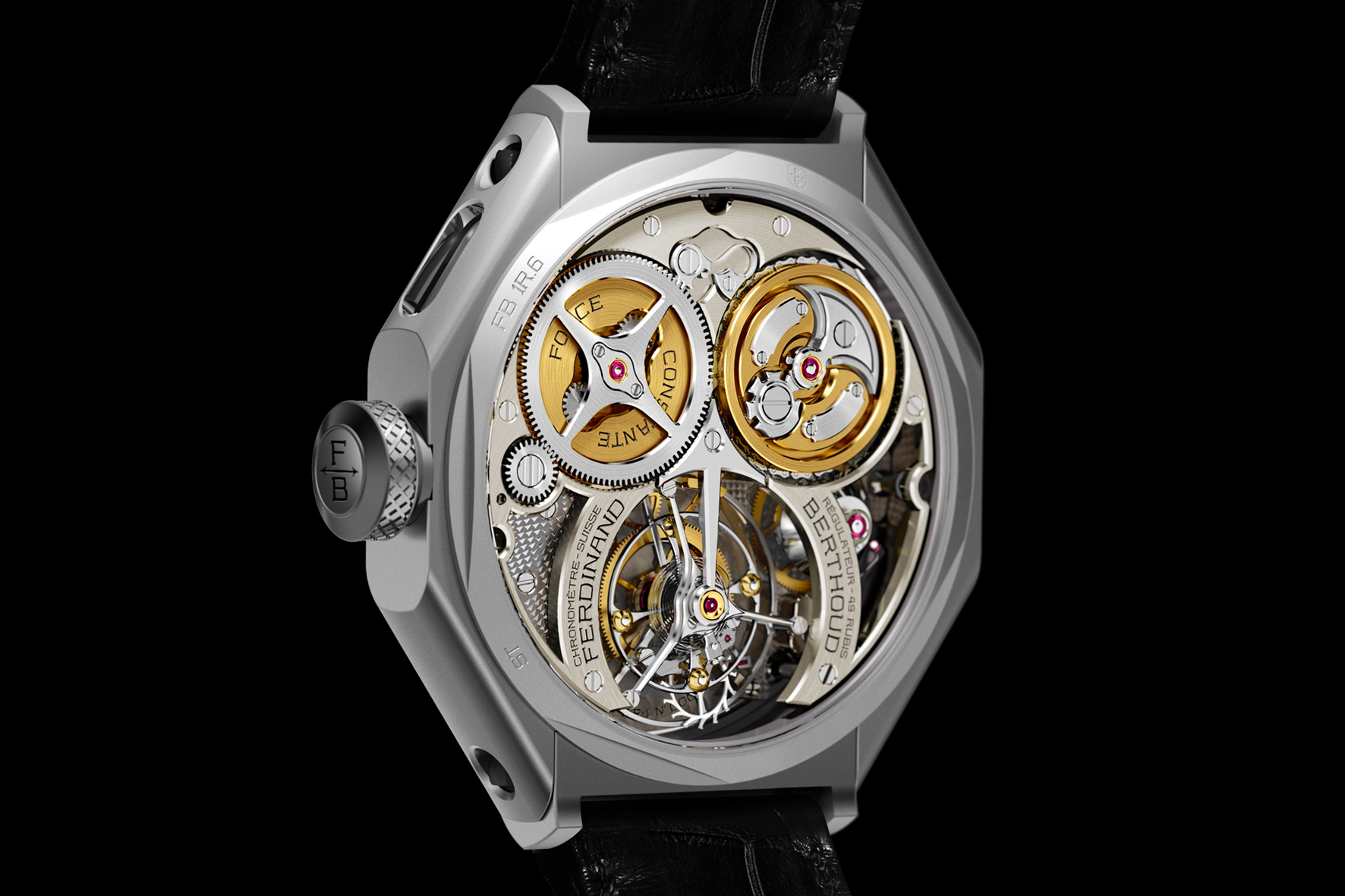
The tourbillon contributes to earning Calibre FB-T.FC.R its chronometer title awarded by the Swiss Official Chronometer Testing Institute (COSC). One particular characteristic makes the tourbillon extremely distinctive: although it performs one rotation per minute, it does not indicate the seconds, since the Chronomètre Ferdinand Berthoud FB 1R.6-1 is one of the rare tourbillons to have a central sweep-seconds hand. Extremely long, slim and made of gilded bronze, the latter moves with remarkable accuracy and in a remarkable stable manner.
In this watch, it coexists with steel, a new material in the array of metals used by Chronométrie Ferdinand Berthoud. This is an ultra-resistant carburised steel, based on a high-tech thermos-chemical surface treatment. It consists of diffusing carbon into a steel substrate, thereby increasing the hardness of the alloy without destroying its initial properties. In this instance, it reaches the record figure of 1200 Vickers, making the Chronomètre Ferdinand Berthoud FB 1R.6-1 exceptionally scratch-resistant. The choice of this type of steel, currently used in the aerospace industry, is a nod to the maritime expeditions achieved using the Marine Chronometers produced by Ferdinand Berthoud in the 18th century and which required the use of extremely sturdy materials.
The Chronomètre FB 1R.6-1 is a limited edition of only 20 pieces, price €.198.000.
